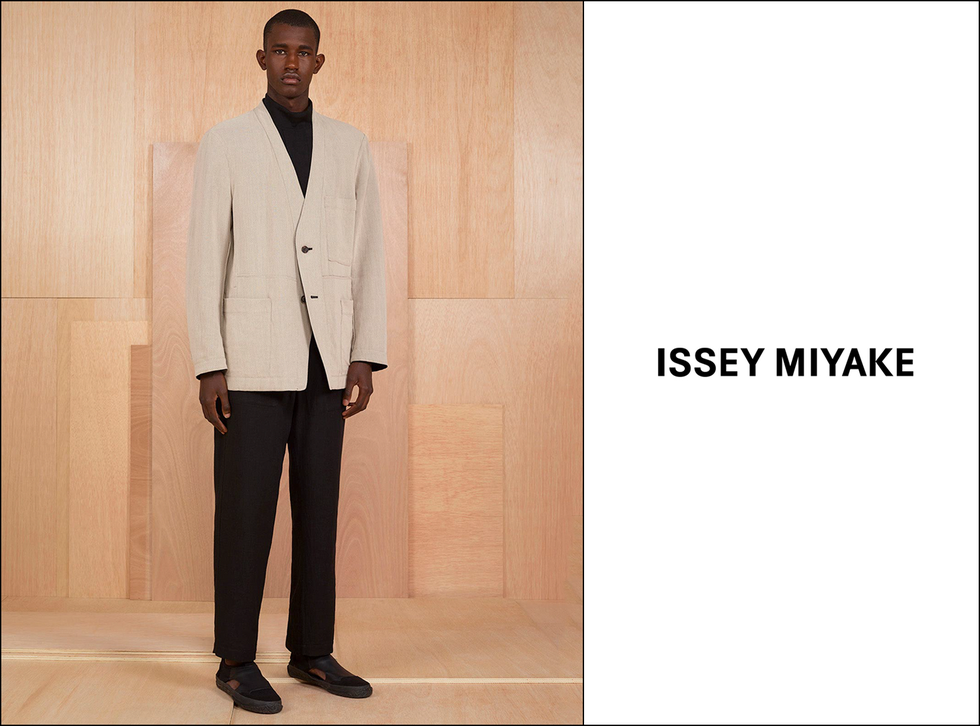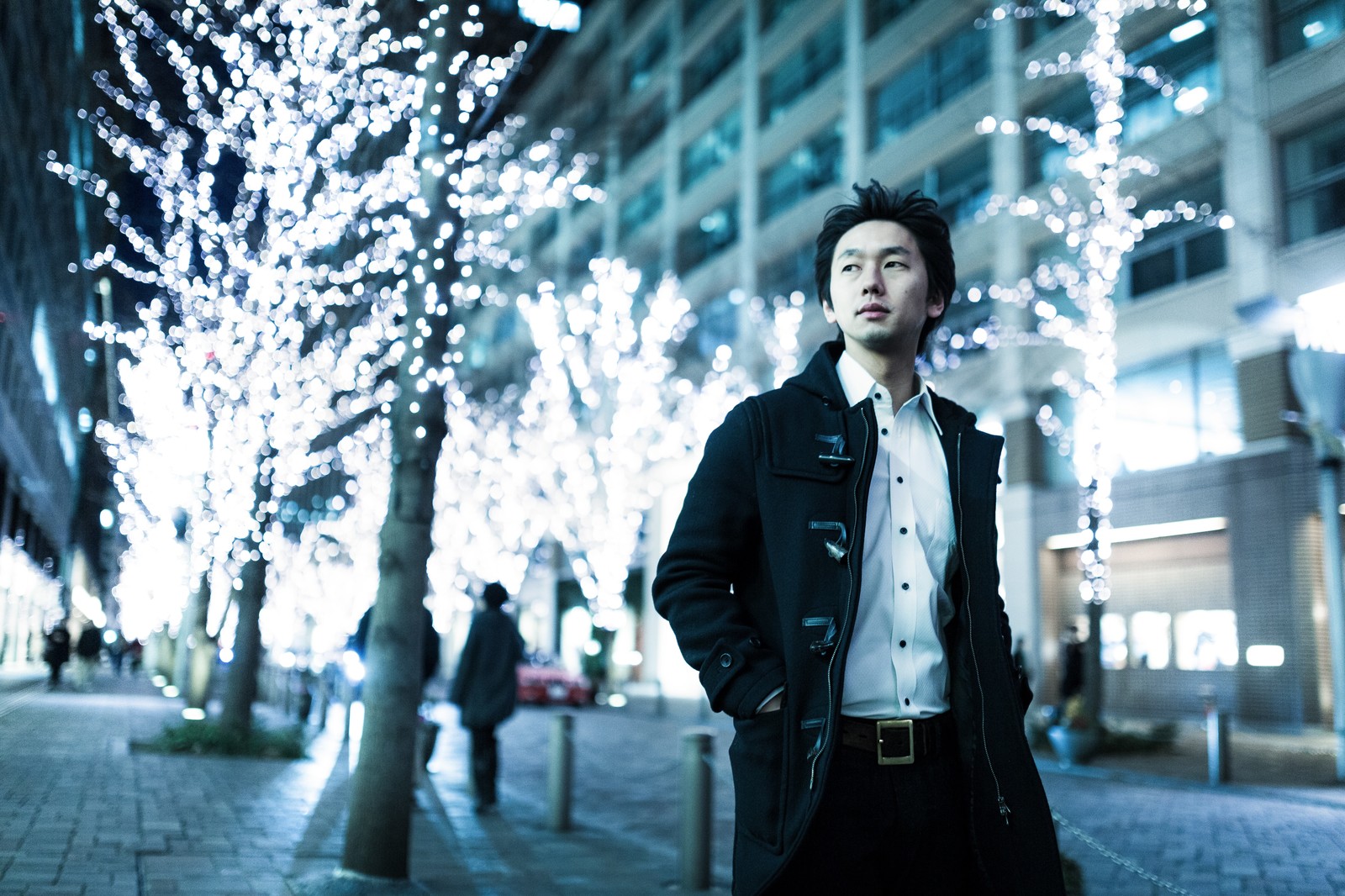Wow, I'm going to get dragged for this one. I realize I'm not breaking new ground here, but no one asked you, guy. This list is not for you. If you already consider yourself an expert on the subtleties of Japanese design, from selvage to shibori and back again, you may show yourself out right away. This is for those who are new to the discourse, which may be passionate.
I once went into a tiny specialty shop in New York City to browse and ended up being dragged into a 30-minute tutorial (to be clear, I was the only student) given by an exceptionally knowledgeable salesman on how Japan became such a power in the world of denim. Dude, I just wanted a pair of jeans. I now hold a PhD in Japan's postwar politics and budgetary policy under the Allied occupation. Japanese clothing is so fantastic that it encourages individuals to wax lyrical for half an hour about how "Japan just does it better, bro."
If you are a beginner, don't bother your precious little head: Here's a list of the companies you should be aware of, provided in alphabetical order, since rating them based on personal preference would expose me to harsh criticism from you fucking monsters, which my extremely delicate ego would not be able to survive. Let me live a bit, guy. I hold a PhD in Japan's postwar politics and budgetary policies under the Allied occupation. Trust me.
Top 11 Japanese Men's Fashion Trends
1. Comme Des Garcons

Following a ground-breaking debut in Paris in the early 1980s, Comme des Garçons' petite genius, Rei Kawakubo, proceeded to do things her own. Kawakubo's intensely intellectual, sculptural creations astounded audiences, and she's generally acknowledged as one of the best designers of her period. Bucking convention may still be her calling card, but the Comme world is now a massive, multifaceted critical and financial success story. As the owners of the Dover Street Market retail empire, Kawakubo and her husband Adrian Joffe routinely support the designers they admire the most—DSM has evolved into a sort of incubator for young design talent, and the Comme imprimatur instantly confers a certain level of authority on emerging brands. Furthermore, Comme's diverse assortment of lines—Play, Shirt, Homme Plus, and more—means that there is really something for everyone, whether you're looking for a regular OCBD or the craziest version of a button-down you can find. Kawakubo, or someone in her sphere, has got you covered.
Read also:
- Men’s Fashion Trends To Leave Behind In 2024
- Outerwear Icons: 6 Of The Most Masculine Jackets For Men
2. Fragmental Design
Hiroshi Fujiwara need no introduction (cue introduction). Fujiawara is a pioneer of the Japanese streetwear industry, having worked behind the scenes with your favorite tastemaker's favorite tastemaker long before the phrase became a thing. Fujiawara founded Fragment as a design firm, and he's collaborated with some of the most desirable brands of all time (including one of the finest Jordan 1 shapes ever). The guy has been around for a while and has seen it all—Fragment shows his unique taste and profound understanding of the culture, and if its designs no longer seem as groundbreaking as they once did, it's because we've all been eating his style for so long that we've lost sight of the source material.
3. Issey Miyake.

Around the same time that Kawakubo was staging revolutions on Paris runways, another Japanese designer was discreetly working on his own modest revolution. In the late 1980s, Issey Miyake started experimenting with a permanent sort of allover pleat—a previously unknown component of a design detail that he finally copyrighted and would later establish a distinct line completely devoted to—in what would become a hallmark style. Miyake's unparalleled understanding of proportion and shape, as well as his ability to incorporate cutting-edge technologies of the time into designs informed by a deep appreciation for fabric, earned him endorsements from some of the world's most discerning aesthetes (he famously dressed Steve Jobs in hundreds of black turtlenecks after the Apple CEO expressed his admiration). Miyake hasn't designed for his brand in decades, but his legacy as a pioneering master of silhouette, as well as the appeal of his permanently-pleated polyester trousers, live on.
4. JUNYA WATANABE.

After graduating from Tokyo's famous Bunka Fashion College, Junya Watanabe landed a coveted apprenticeship as a pattern maker for none other than Rei Kawakubo. Watanabe swiftly rose through the ranks of the firm, and in the early 1990s, he debuted his own namesake brand under the Comme banner, which he continues to display in Paris today. Watanabe has a long history of remixing basic menswear shapes with contrasting materials, and he is arguably best known for multimedia pieces that often use unexpected fabric pairings in surprisingly accessible ways. Since launching his own label, Watanabe has collaborated with a rotating cast of menswear stalwarts, and his collaboration with Levi's exemplifies his design philosophy: tried-and-true styles in precise cuts updated with patches, patterns, or even a poignant piece of poetry printed cleanly on the back.
5. Kapital

Kapital may be the hottest Japanese label on the globe right now, and with good cause. The brand known for its smiley-face logo is favored by a who's who of major names and some of the world's best-dressed guys, and their look books are a phantasmagoria of drool-worthy ooze. (Seriously. Every time, the company puts a startling quantity of goods into its collections. Kapital's reimagining of archetypal American characters, such as the counter-cultural '60s hippie, blissed-out surfer bro, or disaffected liberal arts student, and associated design tropes, creates a maximalist hodgepodge of anachronistic, instantly recognizable cool. Kapital openly draws from several periods of American style, and its allusions are notoriously broad, yet its takes on classic Americana regularly combine aspects unique to traditional Japanese design. Kapital began as a modest business focused to just crafting a very nice pair of jeans ("meticulous" is a term often used to characterize its early attempts to recreate vintage designs), and it still makes denim better than nearly anyone else.
Read also:
- The Impact of Monochrome Outfits on Men’s Fashion
- A Guide to Choosing the Perfect Fit for Men’s Clothing
6. Nepenthes
Okay, I'm cheating a little here. Nepenthes is not a brand; rather, it is a small network of boutiques (with locations in Japan, London, and New York City) that produces and stocks a selection of some of the top Japanese brands in the world. Notable examples include Engineered Garments, developed and produced in New York City by Daiki Suzuki, and Needles, created and manufactured in Japan by Keizo Shimuzu (the store's creator). Shimuzu founded Nepenthes as a distribution firm for hard-to-find US items in the late 1980s, and he built his first shop in Tokyo about the same time. Suzuki joined shortly after, and the team quickly became responsible for producing two of the most unique interpretations on Japanese style available, gradually building a tiny but devoted following of ardent admirers anxiously anticipating each new release. Today Nepenthes' portfolio of brands has truly impacted the mainstream (so to speak), with critical cosigns by folks like ASAP Rocky (who teamed with Needles through his AWGE imprint last year) and any of the many, many rappers who've been seen donning the brand's trademark tracksuits. Nepenthes has a variety of brands, including the newly debuted AÏE, all of which are worth keeping an eye on. Needles and EG are the most popular in-store.
7. Number (N)ine
Takahiro Miyashita, who was expelled out of school as a kid, ended himself working at Nepenthes and regularly visiting the United States, acquiring an admiration for the styles he saw overseas that would eventually appear in the designs of his own label, Number (N)ine. Miyashita was heavily influenced by his interest in music growing up (Number (N)ine is a riff on the title of a Beatles song from the 1960s), and references to music, both mainstream and not, are a constant throughout his work, often in the form of graphic-laden collections that serve as an early precursor of sorts to the elevated streetwear that is now the standard. Miyashita is well-known for his meticulous attention to detail and unwavering dedication to craft—Number (N)ine often sent almost ludicrously technical items down the runway, a theme of difficulty in the brand's designs that belied its more casual-leaning style. Although Miyashita departed Number (N)ine over a decade ago (to create TAKAHIROMIYASHITA TheSoloist), the brand's desirable standing on the secondary market today demonstrates the extent to which his designs continue to resonate.
8. Undercover
If Rei Kawakubo and Issey Miyake were among the first Japanese designers to achieve international acclaim, Takahiro Miyoshita and Jun Takahashi are the rightful inheritors of their mantle, the next generation of Japanese design talent to influence scores of creatives around the world (in fact, Takahashi credits a Comme runway show he attended as a student with inspiring him to pursue design). Takahashi founded Undercover while attending Bunka College of Fashion, and after a seminal encounter with Martin Margiela's work, he began to develop his signature aesthetic, a pioneering blend of streetwear tropes that he helped establish as a standard, heavily influenced by his deep interest in youth culture and masterful command of technical abilities. Although Takahashi just launched a men's brand in 2001, his particular take on the punk-inspired design that has been his signature has continued to flourish, frequently fueled by unexpected partnerships and elaborate IRL presentations.
9. Visvim
Hiroki Nakamura is a famous figure in Japanese design. Nakamura founded Visvim, his creative homage to high-minded Americana, in the early 2000s and swiftly amassed an enviable network of stockists. The brand's frequently exorbitant costs have spawned jokes online and made fans out more than a few well-known figures, but Visvim's propensity to detour into the world of wearable art does not distract from the results of its no-expense-spared approach to the creative process. Nakamura is a detail obsessive, and through his own take on the characteristics of American design, he goes to great measures, including hard-to-find natural dyes and other uncommon manufacturing materials, to create the greatest possible version of every item in each collection.
10. Yohji Yamamoto
Yohji Yamamoto is one of the most accomplished designers of his age. Long before Rick Owens, the reigning Dark Lord of men's fashion, was a glimmer in the eye of any shopper with a taste for all black everything, Yohji was actually cutting a wicked figure on the Paris catwalks. Yohji (like genre-defining artists in any other subject, his first name is always enough) pioneered a style that has become associated with his brand: dark, languid shapes that resist easy classification via dense layering and simple, almost mournful deconstruction. By now, Yohji has won almost every award a designer can (including many that are typically reserved for public figures of particular import), but most customers are likely familiar with his name through Y-3, his collaboration with Adidas, a partnership between a high-end "designer's designer" and a well-known retailer that paved the way for the era of collaborations we are currently experiencing. Yohji's most recent runway collection was the season's showpiece, and he has said that he has no plans to retire. His perspective on the current condition of menswear will be one I'm willing to hear for as long as he chooses to express it.
11. Beams
Beams is almost like the J.Crew of Japan, if J.Crew had a propensity for meticulous recreations of vintage American fashions. What began as a tiny business grew into a network of department shops around Japan that carried an increasingly diverse range of labels, including the heritage-oriented Beams Plus and the tailoring-focused Beams F. Mr Porter distribution and a recent deal with Nordstrom make the brand more accessible in the United States than ever before.








